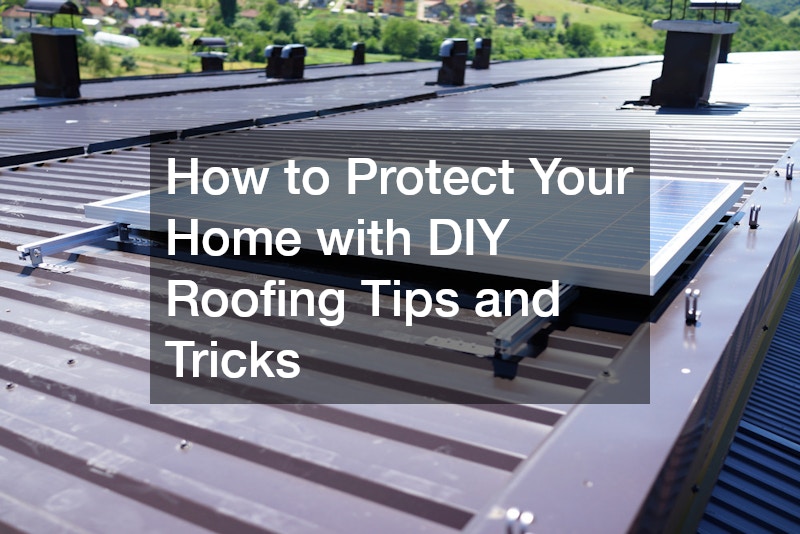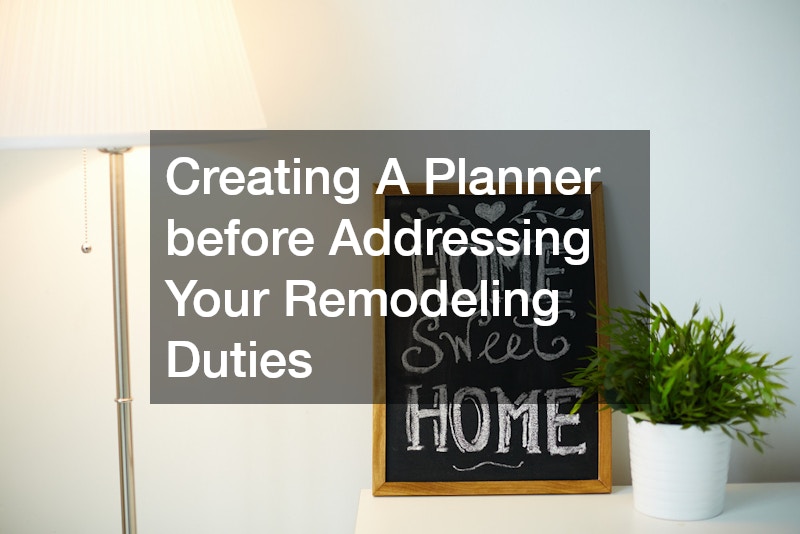It’s important to maintain your roof as a homeowner to protect your investment. This will also ensure that your home lasts a long time. Regular roof maintenance not only preserves the structural integrity of your property but also helps to prevent minor issues from escalating into costly repairs. By dedicating time to inspect, clean, and repair your roof, you can avoid potential damage caused by leaks, weather exposure, and wear and tear over time. This approach is particularly vital in Australia, where harsh weather conditions, including intense heat, heavy rainfall, and storms, can take a toll on roofing materials.
This comprehensive guide will cover DIY roofing tricks and tips that can be used to maintain your roof, and avoid costly repairs and replacements in the future. Whether you’re a seasoned DIY enthusiast or a first-time homeowner, this guide provides practical advice to keep your roof in top condition all year round. From regular inspections and gutter cleaning to repairing damaged shingles and improving ventilation, these tips are designed to help you protect your property effectively. With proper maintenance and timely action, you can extend the lifespan of your roof and safeguard your home for years to come.
-
Roof Inspection
Regular roof inspections are essential for maintaining your home. You can detect any problems such as leaking, damaged shingles or poor ventilation by inspecting your roof on a regular basis. To catch problems early, it is best to inspect your roof twice a year.
Start by looking for signs of damage, such as cracked or missing shingles, sagging or rusted flashing. Be sure to check the condition of your rain gutters. Clogged gutters may cause water to back up and cause damage to your roof. Inspect the attic to check for signs of mould or water stains, which could indicate a leaking roof. In our roofing tips, we emphasise the importance of inspections.
Regular roof inspections will help you identify problems early, allowing you to address them quickly and save you money and time in the end. Consider hiring a roofing company if you are not confident in performing the roof inspection.
-
Cleaning Gutters
Our roofing tips and tricks include regular gutter cleaning. Clogged gutters may cause water to back up, which could damage your roof or lead to leaks. It is important to clean gutters twice a year or more often if there are overhanging branches or you live in a region prone to heavy rain.
Start by removing all debris, such as dirt, leaves, and twigs. To remove the gunk from the gutters, use a garden trowel or gutter scoop. Rinse the gutters thoroughly with the hose after scooping out any remaining debris. While cleaning the gutters, check for leaks and damage. Repair as necessary.
Keep your gutters clear to prevent water damage on your roof and home. Consider hiring a roof cleaning service if you are not confident in cleaning your gutters.
-
Repairing Shingles
In addition to causing leaks, damaged shingles may also cause water damage. Look for cracks, curling or missing shingles to determine if you need to repair your shingles. It’s vital to fix any problems as soon as possible to avoid further damage.
To repair damaged shingles with a pry-bar or hammer, remove the damaged shingle carefully. Replace the damaged shingle with a similar-sized and-material replacement. To prevent leaks, secure the new shingle using roofing nails and seal the edges of the shingles with roofing cement.
By regularly inspecting your roof for damage and repairing it, you can prolong its life and avoid costly repairs in the future. Consider hiring a roofing contractor if you are not confident in making repairs to your roof.
-
How to Prevent Ice Dams
Ice dams can cause water damage to your roof and lead to leaks. Ice dams are formed when snow melts and then refreezes along the roof edge. This creates a barrier which prevents water draining correctly. It is important to have proper ventilation and insulation in your attic to prevent ice dams.
Make sure that your attic is well insulated in order to prevent the heat from escaping, melting your roof snow. Ensure your attic has good ventilation to let hot air escape and to prevent condensation. You can avoid ice dams on your roof by keeping your attic well-insulated and cool.
It’s vital to act quickly if you see signs of ice dams on your roof. For example, icicles along the eaves. This will prevent damage to your house from water. Hire local roofers who can assess the problem and determine the best solution.
-
Tree Maintenance
Overhanging branches are a danger to your roof, and can cause damage. Trim any branches that are overhanging your roof and could fall during high winds or a storm.
You can protect your roof and home by maintaining your trees. If you are unsure of how to safely trim branches close to your roof, you may want to hire a local roofer or tree service to help you.
-
Ventilation
Roof ventilation is vital for your roof’s health and your comfort. Proper ventilation will allow hot air from your attic to escape, preventing excessive heat and condensation that can damage and shorten the lifespan of your roof.
Poor roof ventilation can be identified by high humidity in the attic or mould or mildew in the summer. Consider installing ridge vents or soffit fans to improve ventilation. These will help regulate airflow in the attic and prevent moisture from building up.
-
Installing Skylights
Skylights can be installed on your roof to bring in natural light and increase energy efficiency. Skylights brighten dark rooms and reduce the need for artificial light. They also allow you to see the sky inside your home. Skylights also add aesthetic value and increase the value of your home.
It’s essential to install skylights of high quality that are energy efficient and have proper insulation. This will prevent leaks or draughts. Place your skylights in a way that maximises natural light and minimises heat loss or gain, depending on the climate you live in.
-
Insulating the Attic
Insulating your attic is essential for a comfortable, energy-efficient house and to protect your roof against extreme temperatures. Attic insulation is important to prevent heat loss during the winter months and heat gain during the summer. This will reduce energy costs and extend the life of the roof.
Attic insulation comes in many forms, such as fibreglass, cellulose or spray foam. Consult a local roofing specialist or insulation expert to determine which type of insulation is best for your home and climate. Insulating your attic properly can prevent mould, ice dams and condensation.
-
Sealing Roof Leaks
Untreated roof leaks can lead to structural problems, water damage and mould growth. In terms of roofing tips and tricks you can find roof leaks in your attic by looking for water stains, moisture, and mould. Also, check your ceiling for bulging or water-stained paint. These can be signs of a leaky roofing system.
Sealing roof leaks begins with identifying and fixing the source. Roof leaks can be caused by damaged shingles or flashings, cracked or deteriorated sealing around skylights or chimneys. To prevent further damage, repair the source of leakage and seal it with silicone or roof cement.
Consider hiring a local roofer to help you locate and repair leaks. They can assess the problem and make a professional fix. You can protect your home from further damage by repairing roof leaks as soon as possible.
-
Weather Damage Protection
Roofs are subjected to a variety of weather conditions throughout the year, such as heat, cold and wind. They can also be damaged by rain, snow and other elements. Roofs can be damaged by shingles, leaks or ice dams. Maintaining your roof is important in order to protect it from weather damage.
Installing impact-resistant shingles or metal roofing can protect your roof from weather damage. Roof inspections, maintenance, and cleaning can help to prevent weather damage and prolong the life of your roofing system. Proper attic ventilation and insulation can also prevent weather-related problems such as ice dams and condensation.
Consider hiring a local roofer to assess your roof’s damage and make recommendations. You can protect your roof from weather damage and ensure that your home will last for many years.
-
Roof Maintenance Checklist
You can use a DIY roof maintenance checklist to stay on top of your regular roof maintenance and identify problems early, before they turn into costly repairs. Roof maintenance tasks may include inspecting the roof for damage, cleaning the gutters, trimming your trees, checking insulation and ventilation in attics, and sealing roof holes.
To keep your roof in top condition all year round, it’s best to use a DIY roof care checklist. You can protect your roof’s integrity by following a regular schedule of maintenance and fixing problems promptly.
If you are unsure of how to create your own roof maintenance checklist, or how to perform the tasks, you may want to hire a local roofing contractor, or a group of residential roofers, to help you. You can maintain your property value and protect your home by following a DIY checklist for roof maintenance.
-
Repair vs. Replace
It’s crucial to know the right time to replace or repair your roof when it comes to roofing tricks and tips. This will ensure that your home is well protected. When deciding whether to replace or repair your roof, you should consider the age of the roof, the extent of the damage, the cost of repairs and the lifespan expected of the roof.
Repairing the damaged areas of your roof may suffice to extend its life expectancy if it is relatively new. If your roof is at the end of its life, has extensive damages, or needs frequent repairs, replacing the roof may be a more cost-effective option. Consult a local roofer to determine the current condition of your roofing system and the best course of action.
You can protect your home by making an informed decision about whether you should repair your roof or replace it. Consult with a residential roofer for advice and recommendations if you are unsure of the condition of the roof or what the best course of action is.
-
Hire a Professional
Although DIY roof maintenance is a great way to address minor problems and keep up with regular maintenance, it can be best to hire a roofer for more complex repairs or to replace roofs. Our list of roofing tricks and tips includes a section on when to hire a professional. When you are unsure of how to solve a problem, don’t have the right tools or skills, or need extensive repairs, consider hiring a roofer.
Look for positive reviews from customers, as well as licensing and experience. Ask friends and family for recommendations or research local roofing companies to find a reputable and reliable roofer. Compare services and get multiple quotes before you make a final decision.
Don’t hesitate if you need professional roofing advice or tips to get the job done correctly. You can protect your house and roof by hiring a professional roofing contractor when necessary.
Conclusion
Maintaining your roof will protect your home, and ensure its longevity. Regular roof maintenance not only preserves the structural integrity of your property but also prevents minor issues from escalating into expensive repairs. A well-kept roof can withstand harsh weather conditions, providing you with peace of mind during storms and extreme heat. You can avoid costly roof repairs and replacements by following these DIY roofing tricks, which are simple, practical, and budget-friendly.
It’s important to take care of your roof by regularly inspecting it for signs of damage, cleaning the gutters to prevent blockages, fixing shingles that may be cracked or missing, and addressing any potential risks before they worsen. Whether you are inspecting it, cleaning the gutters, fixing shingles, preventing an ice dam, or hiring a roofer, this is vital for your home. Proactive maintenance not only protects your roof but also enhances the overall value of your property.
To protect your investment, consult local roofers and contractors to address any issues as soon as possible. Professional assistance can provide expert advice and ensure that repairs or replacements are done correctly. By combining DIY maintenance with expert support, you can keep your roof in excellent condition for years to come.



